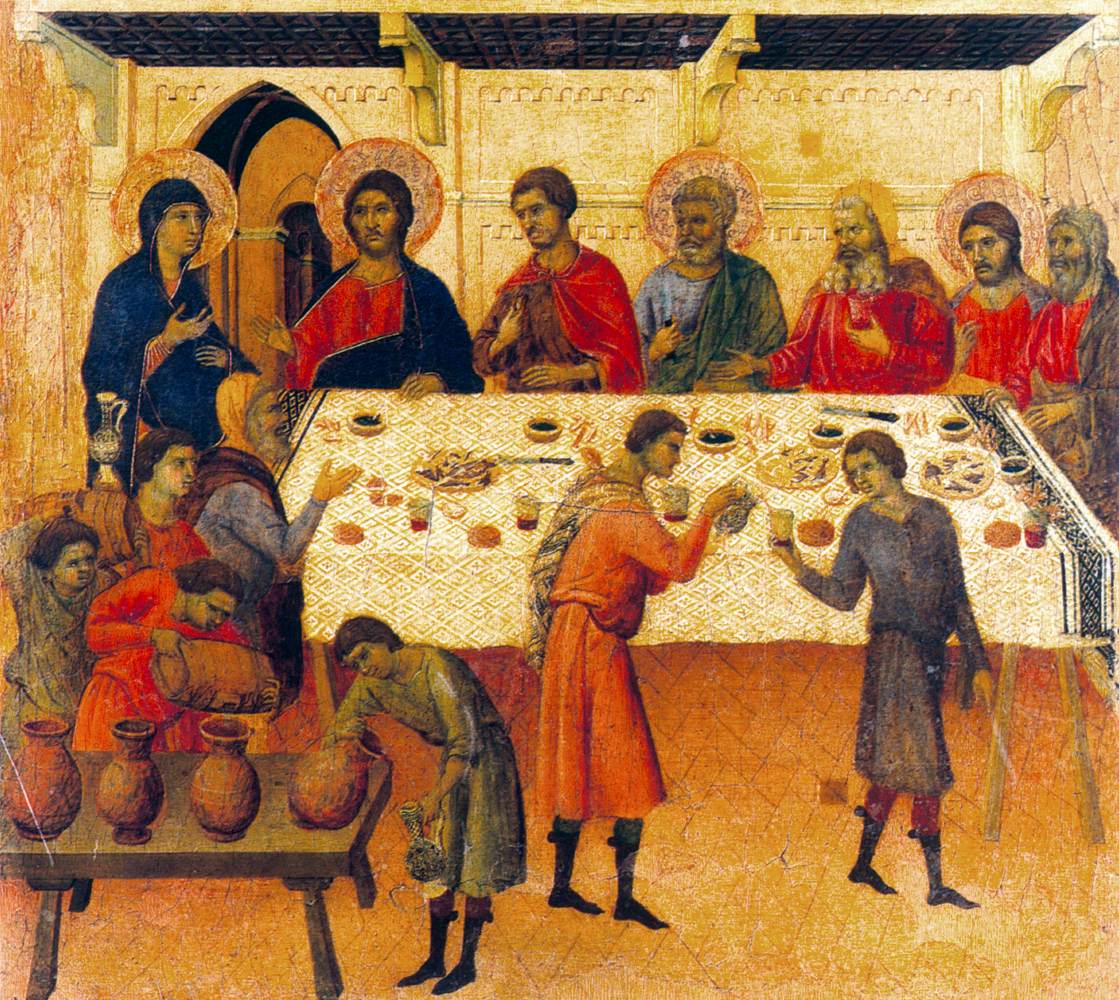Description
The painting Wedding at Cana (scene 5) by the artist Duccio Di Buoninsegna is a work that stands out for its Gothic artistic style, which is characterized by the precision in the representation of details and the use of bright and contrasting colors. The composition of the work is very interesting, since it presents the characters in different planes and levels, thus creating a sensation of depth and movement.
Color is another prominent aspect of the painting, as Duccio Di Buoninsegna used a wide range of tones to represent the different elements of the scene, from the dresses of the guests to the decorative objects on the table. Gold and silver tones are used to highlight the richness and luxury of the celebration, while blue and green tones create a serene and relaxed atmosphere.
The story behind the painting is also very interesting. Wedding at Cana (scene 5) depicts one of the New Testament scenes in which Jesus performs his first miracle turning water into wine during a wedding in Cana. The work is part of a set of panels that Duccio Di Buoninsegna created to decorate the main altar of the cathedral of Siena in the fourteenth century.
A little known aspect of the painting is that it was stolen by the Nazis during World War II and taken to Germany. After the war, the work was recovered and returned to Italy, where it is now in the Museo dell'Opera del Duomo in Siena.
In summary, Wedding at Cana (scene 5) is a work of great beauty and artistic value that stands out for its gothic style, composition, color and the story behind it. It is a display of the talent and skill of Duccio Di Buoninsegna, one of the great masters of medieval Italian art.

